A Minor History Of / Falling from Great Heights
Down to earth
Joshua Foer
“A Minor History Of,” a column by Joshua Foer, investigates an overlooked cultural phenomenon using a timeline.
CA. 8 AD
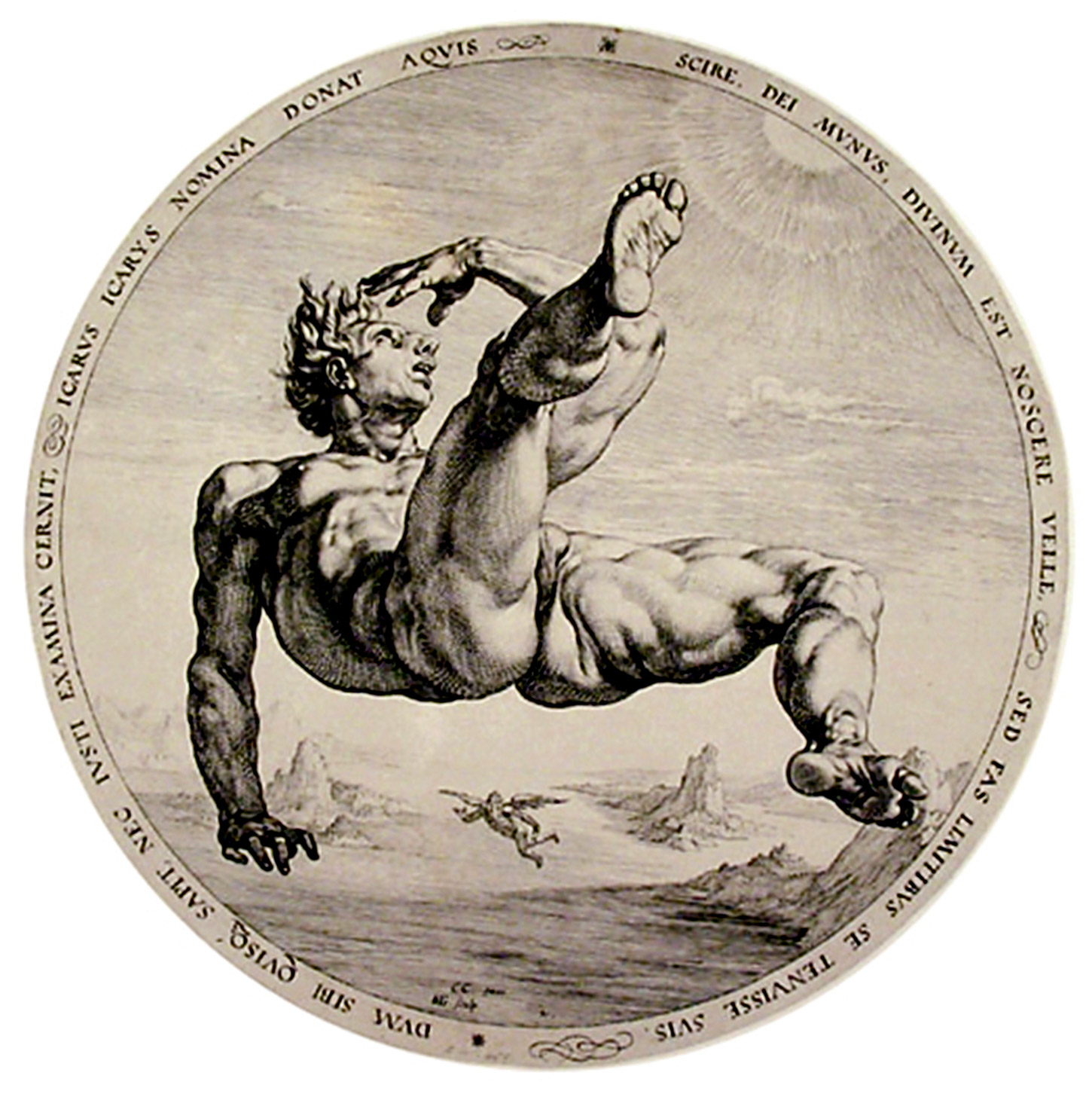
Ovid publishes his canonical account of the myth of the wax-winged Icarus, spurring generations of like-minded daredevils to fall to their deaths.
3RD CENTURY
To ensure that the builder of one of his beloved towers would never replicate his work elsewhere, the Persian king Shapur I orders the architect to construct the tower’s roof without providing any means for his own descent. “The architect, in no position to reject the offer, requested only that he have enough wood to build a shack to protect himself from vultures,” writes Michael Abrams, author of the definitive history Birdmen, Batmen, and Skyflyers. “Once the tower was complete, the architect hewed himself a pair of wings with the wood and, with a little help from a strong wind, flew to his escape.”
6TH CENTURY
In perhaps the earliest recorded attempt at human flight, the short-lived tyrannical Chinese emperor Kao Yang orders a group of condemned prisoners to attach bamboo wings to their backs and jump from the Tower of the Golden Phoenix. The emperor calls it a “liberation of living creatures.” In fact, all the prisoners die upon striking the ground.
CA. 875
Feathered and wearing a large winged cloak, the Berber astronomer and poet Abbas Ibn Firnas climbs a tower near Cordoba and pronounces, “Presently, I shall take leave of you. By guiding these wings up and down, I should ascend like the birds. If all goes well, after soaring for a time I should be able to return safely to your side.” All does not go well. After flying a short distance, Ibn Firnas crashes to the ground, badly injuring his back.
CA. 1500

According to legend, a Ming dynasty bureaucrat named Wan Hu constructs a rocket-propelled chair with the aim of travelling to the stars. He attaches forty-seven large black-powder rockets and a pair of kites to a wooden chair, robes himself in his finest attire, and invites forty-seven assistants to light the fuses simultaneously. When the smoke and flames clear, Wan Hu and his chair are gone.
1617
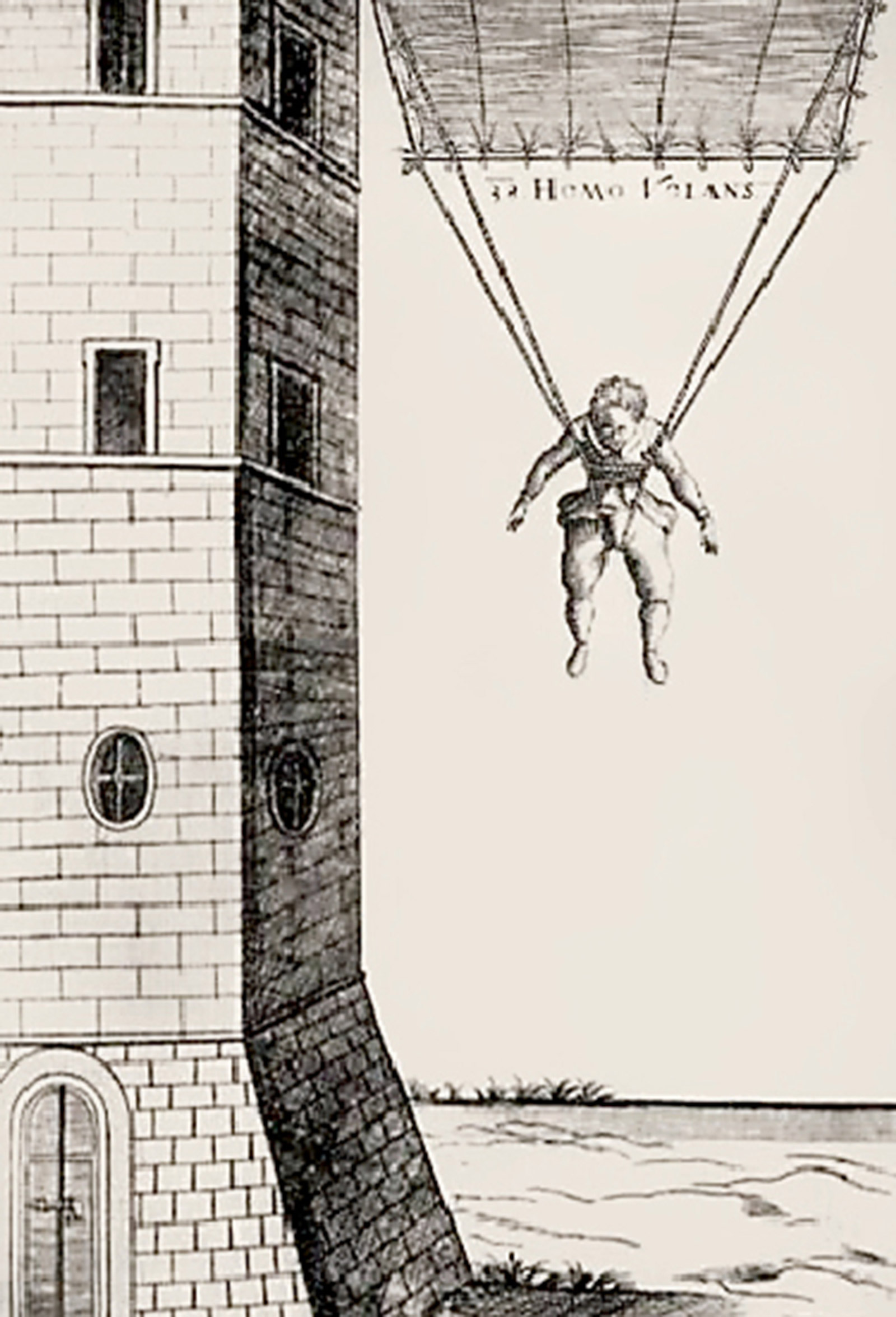
Inspired by the sketches of Leonardo da Vinci, the Croatian polymath Faust Vrancic builds the world’s first rigid parachute, and then uses it to successfully leap from a Venetian tower. He dubs his invention Homo Volans, the Flying Man.
1618

A group of irate Bohemian Protestants storm the Hradschin Castle and hurl two leading members of the Catholic Council of Regents and a scribe out of a high window. Though they land on a pile of garbage and survive, the Defenestration of Prague nonetheless sparks the Thirty Years War. The surviving scribe, Philip Fabricius, is later granted the title Baron von Hohenfall, literally “the Baron of Highfall.”
17TH CENTURY
In a letter to his friend Sir Isaac Newton, Robert Hooke outlines the consequences of digging a tunnel from one side of the earth to the other. A “gravity train” dropped into such a tunnel would accelerate in free fall to some 25,000 miles per hour until it reached the center of the earth, at which point it would begin decelerating until eventually coming to a complete rest at the other end of the planet. Total trans-planetary travel time: 42 minutes and 12 seconds.
1877
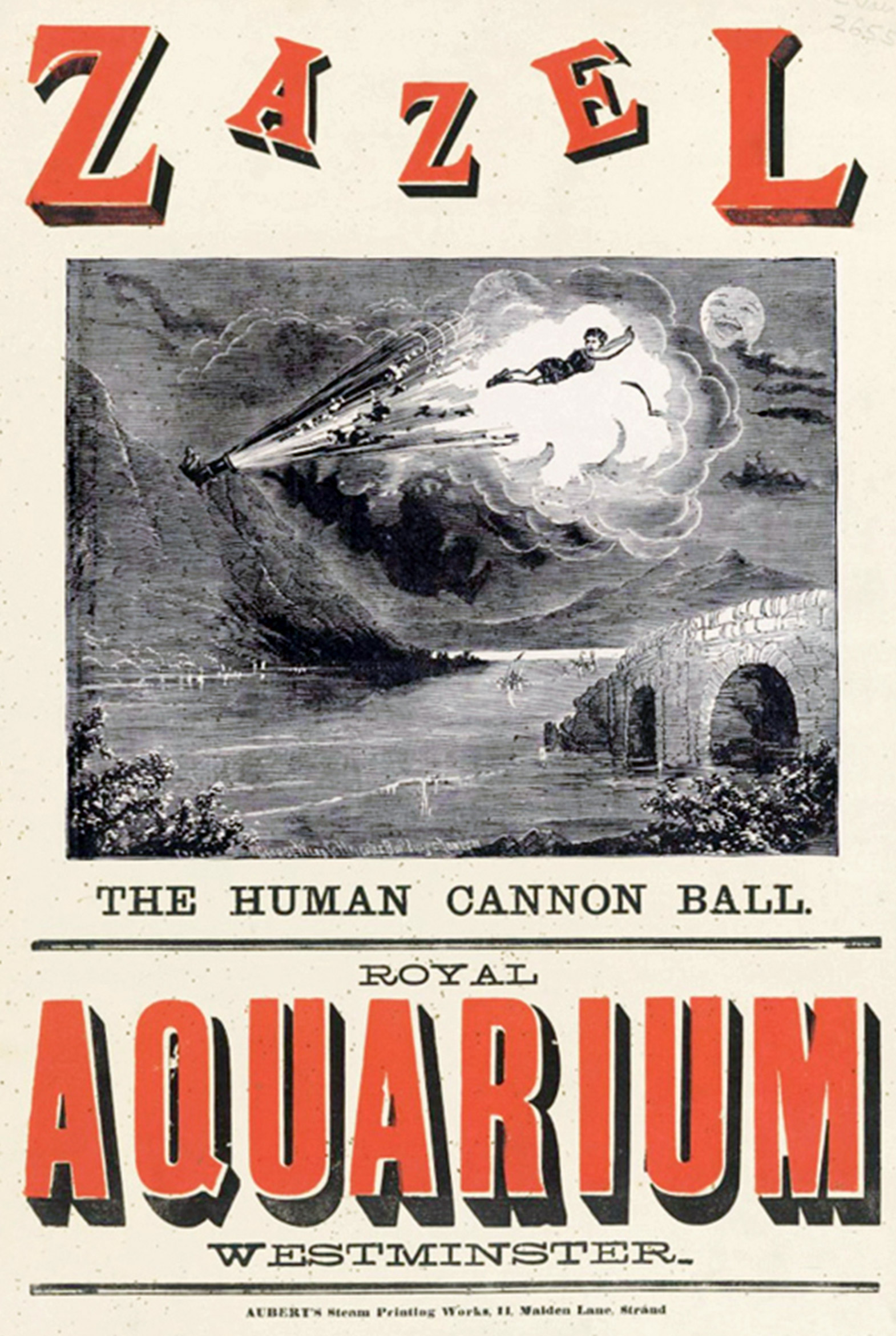
Fourteen-year-old Rossa Matilda Richter, working under the stage name Zazel, inaugurates her acclaimed human cannonball act. Stuffed into a spring-loaded cylinder that was patented six years earlier by “the Great Farini,” Zazel is launched into the air accompanied by fireworks and a loud bang, and lands in a net sixty feet away. Many years later, having grown wealthy and famous from her cannonball act, Richter is crippled when the stunt goes awry.
1887
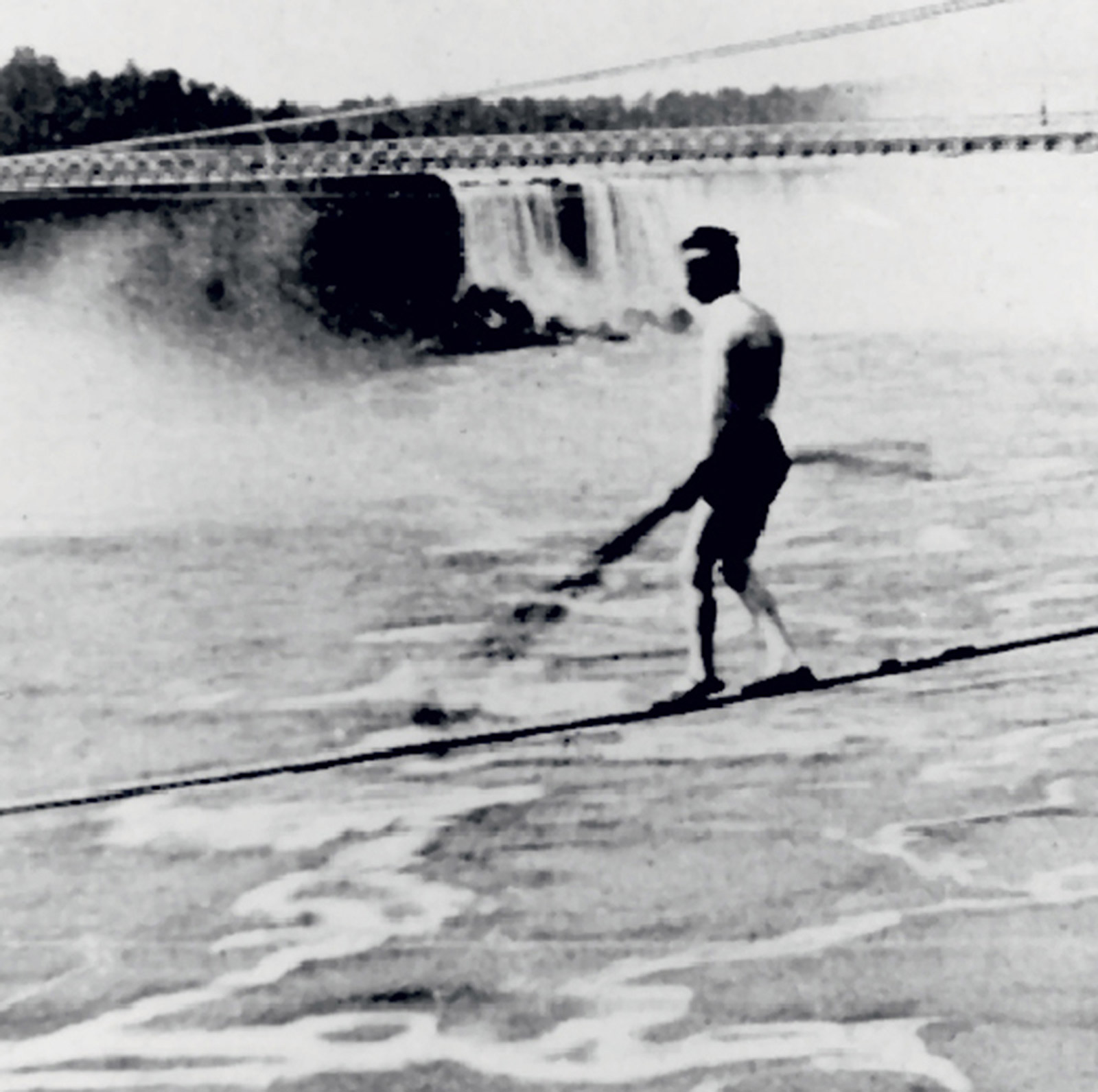
Apparently drunk, renowned funambulist Stephen Peer loses his balance and plummets forty-five feet to his death while attempting a midnight crossing of the thinnest tightrope ever strung over Niagara Falls, a steel cable a mere five-eighths of an inch thick. According to local Niagara lore, it was not a wire-walking misstep that did Peer in, but rather a bullet shot by one of his funambulatory rivals.
1891
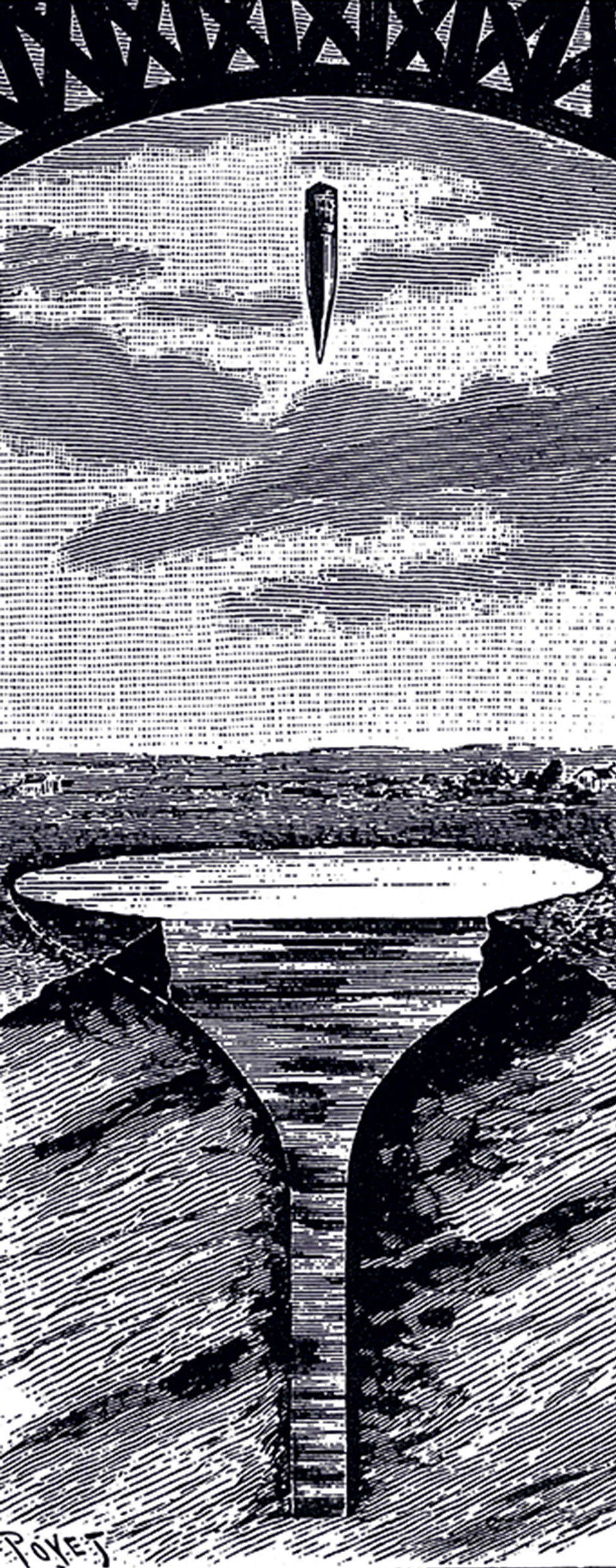
Monsieur Carron unveils his “Machine for Sensational Emotions” to the editors of Nature magazine. The mortar-shaped thrill-ride, containing a cabin large enough for fifteen intrepid thrill-seekers and a large bed of springs underneath, is to be dropped from the top of the Eiffel tower. According to Carron, it will reach a speed of 172 miles per hour in free fall, faster than any human being had theretofore travelled, and “it will be prevented from being dashed to smithereens by falling into a water-filled pond shaped like a champagne-glass.” Mr. Carron assures the editors of Nature that “the shock felt by the occupants on landing will be in no way unpleasant.”
1901
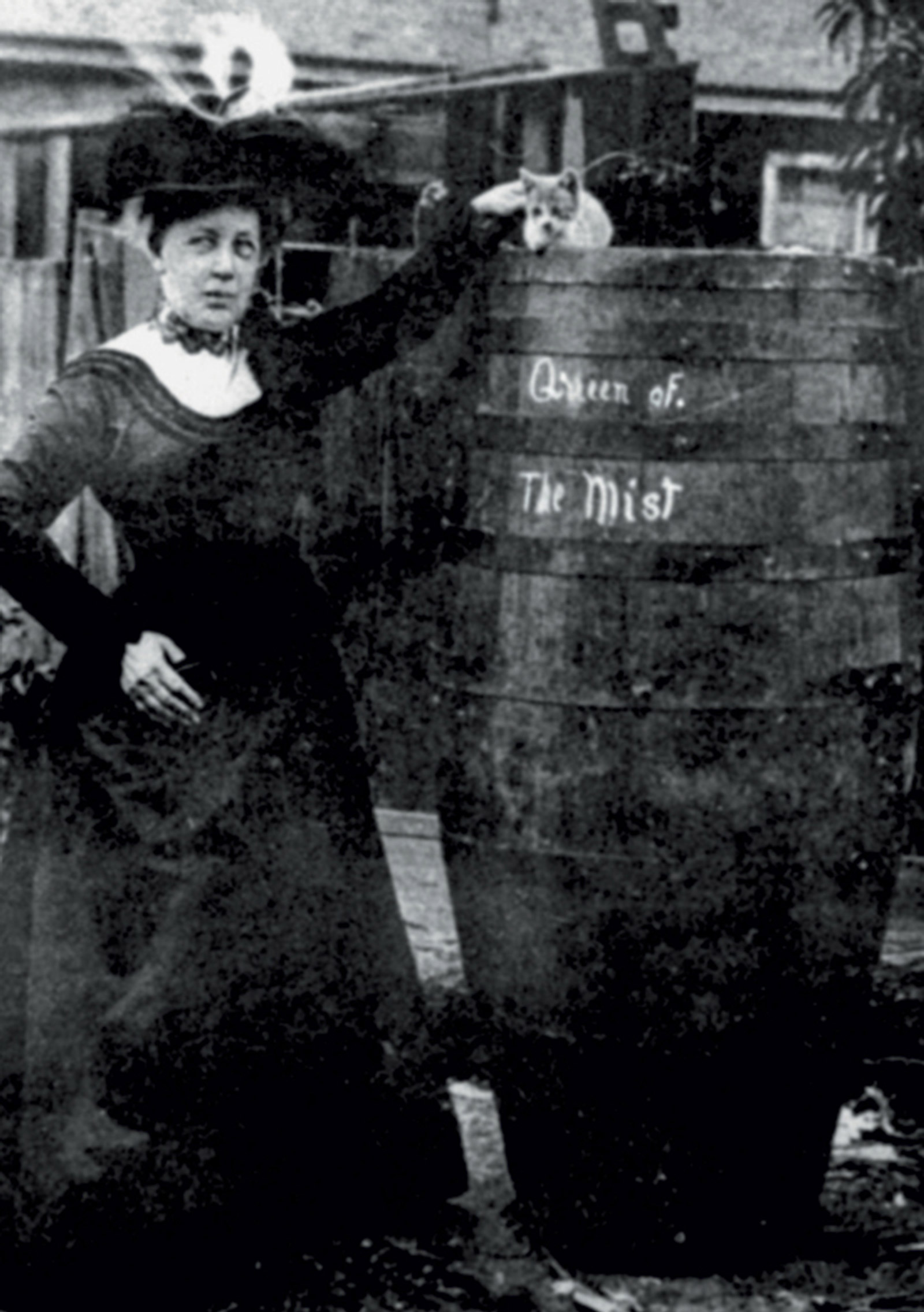
In search of fame and fortune, a sixty-three-year-old retired dancing instructor named Annie Edson Taylor becomes the first person ever to plunge over Niagara Falls in a barrel and survive. Upon recovering from her concussion, she tells reporters, “If it was my dying breath, I would caution anyone against attempting the feat.”
1912
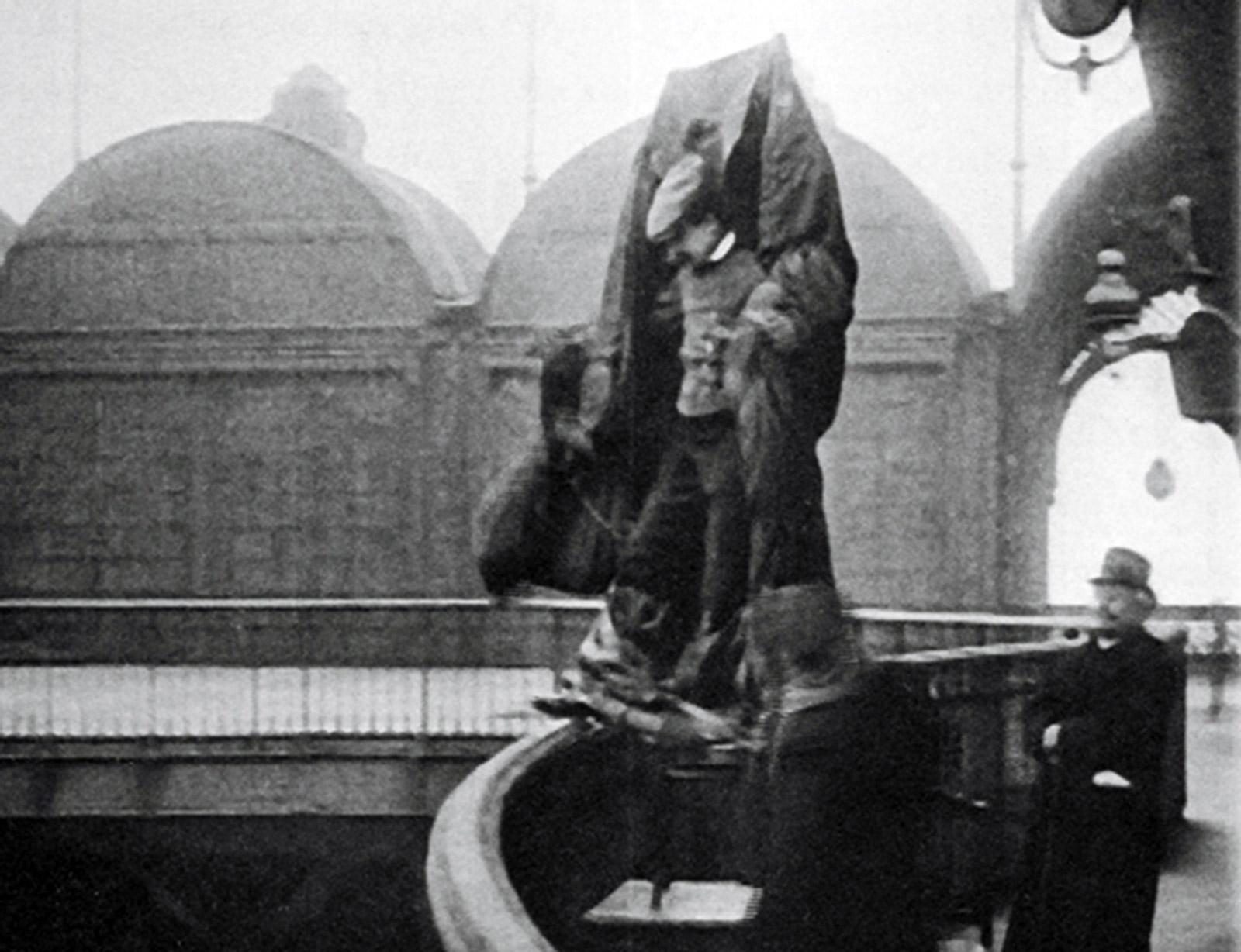
With a film camera trained on him, Austrian tailor Franz Reichelt steps off the observation deck of the Eiffel Tower wearing a combination overcoat-parachute garment of his own design. He expects onlookers will measure the duration of his flight. Instead, they measure the depth of his crater.
1937
“Someday I think that everyone will have wings and be able to soar from housetops. But there must be a lot more experimenting before that can happen,” says Clem Sohn, also known as “Michigan Icarus” and “the human bat.” Just before falling to his death at the Paris Air Show, he assures an onlooker, “I feel as safe as you would in your grandmother’s kitchen.”
1942
Hugh De Haven, an American pilot who survived a World War I airplane crash, publishes his landmark paper “Mechanical Analysis of Survival in Falls from Heights of Fifty to One Hundred and Fifty Feet,” which concludes that “the human body can tolerate … a force of two hundred times the force of gravity for brief intervals.” Thirteen years later, De Haven is issued a patent for the first three-point seatbelt.
1960
Air force pilot Joe Kittinger is lifted 102,800 feet into the sky in a pressurized balloon. At the end of his three-hour ascent, at the edge of space, looking out across the arc of the Earth, he opens the capsule and jumps into the vanishingly thin air. During his twenty-six-kilometer free fall, which lasts four-and-a-half minutes, he accelerates to 615 miles per hour, arguably becoming the first man to touch space and certainly the first to break the sound barrier outside of an aircraft.
1972

Croatian terrorists blow up a DC-9 jet 33,316 feet above Czechoslovakia, killing all twenty-nine passengers and crew, save one, a twenty-two-year-old Serbian stewardess named Vesna Vulovic, who free-falls for over three minutes without a parachute, before colliding with the side of a snow-covered mountain. Miraculously, she survives.
1974
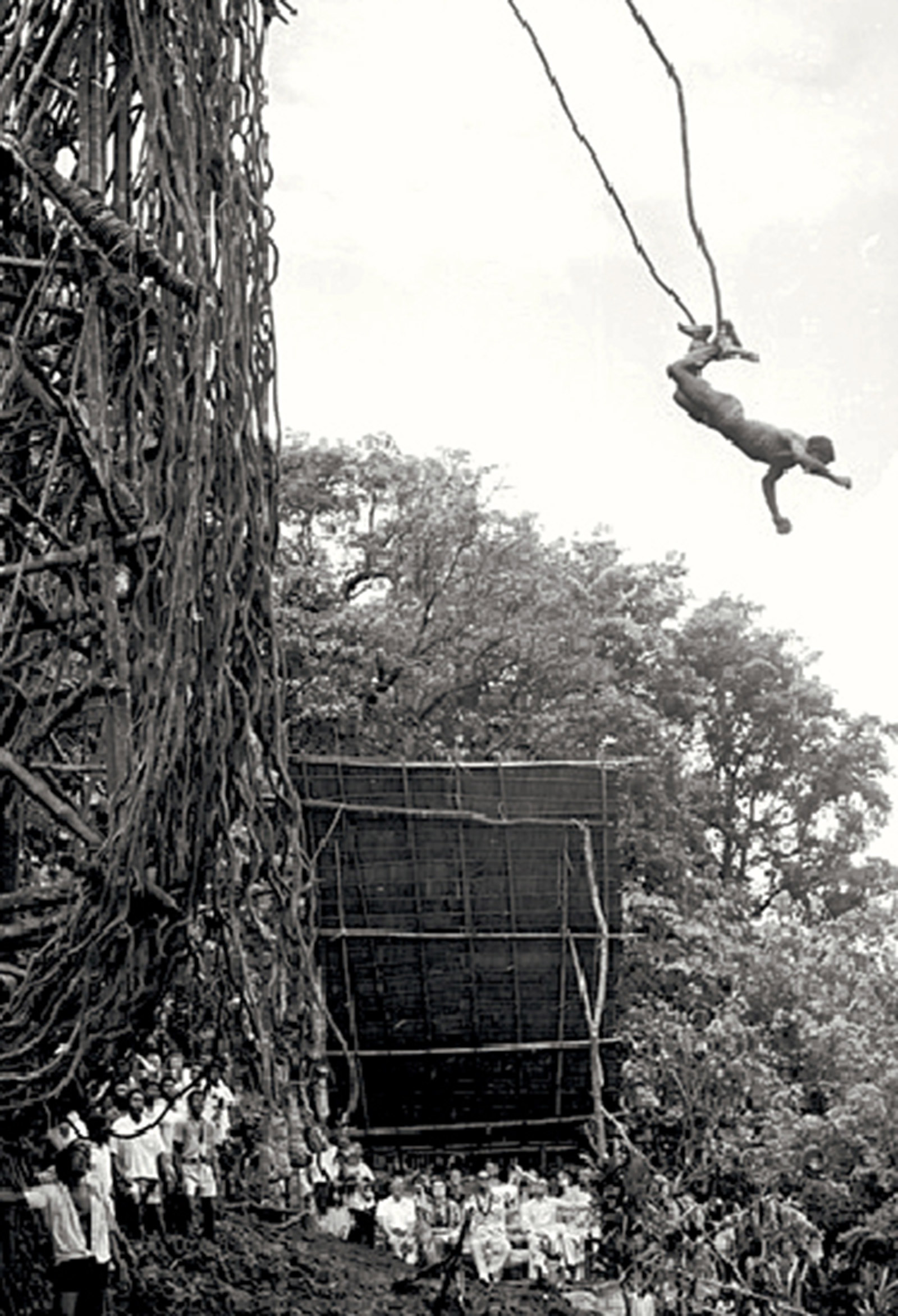
Queen Elizabeth II travels to Pentecost Island, in Vanuatu, to witness the world’s most primitive form of bungee jumping. Each spring, just after the first yams begin to emerge from the soil, the men of the South Pacific island erect enormous wooden towers, some as tall as seventy-five feet, in each of the island’s villages. The men climb to the top of these towers, attach two long elastic vines to their ankles, announce to the world their most intimate (and occasionally last) thoughts, and then leap. The vines are supposed to catch the jumper just at the point where his hair is able to brush the ground, ritually fertilizing it for a bountiful yam harvest.
1987

The Journal of the American Veterinary Medical Association publishes a study of 132 cats that fell from high-rise buildings. It concludes that, contrary to expectations, the higher the fall, the more likely the cat is to survive. Researchers hypothesize that in falls of more than seven stories, cats are able to flay their bodies like a parachute, decreasing their terminal velocity.
2001
Between 8:46 am and 10:28 am on September 11th, at least two hundred people jump to their deaths from the north tower of New York City’s World Trade Center. According to USA Today, which systematically studied videos of the horrific day: “For those who jumped, the fall lasted 10 seconds. They struck the ground at just less than 150 miles per hour—not fast enough to cause unconsciousness while falling, but fast enough to ensure instant death on impact. … They jumped alone, in pairs and in groups.”
2008

Harnessing himself to 1,000 helium-filled balloons, Father Adelir Antonio de Carli takes off from the Brazilian port of Paranagua in a fundraising stunt to help build a spiritual rest stop for truck drivers. After reaching an altitude of 20,000 feet, an unexpected change in wind patterns blows the Catholic priest out to sea, where he loses radio contact with the ground, and eventually plunges to his death. Several days later, his balloons are discovered floating on the ocean waves, but not his body.
Joshua Foer is a freelance science writer. He is working on a book about the art and science of memory, forthcoming from Penguin.